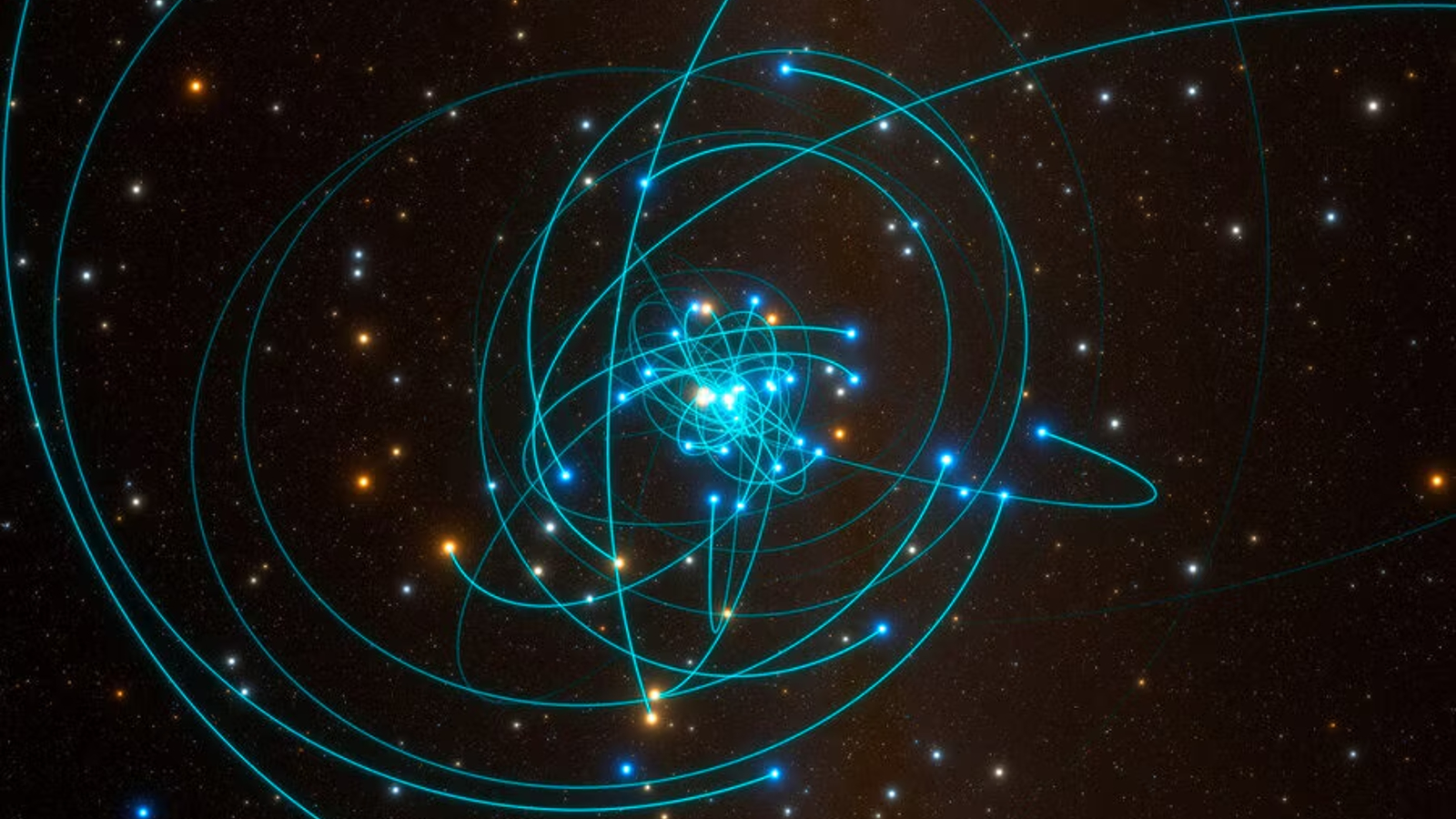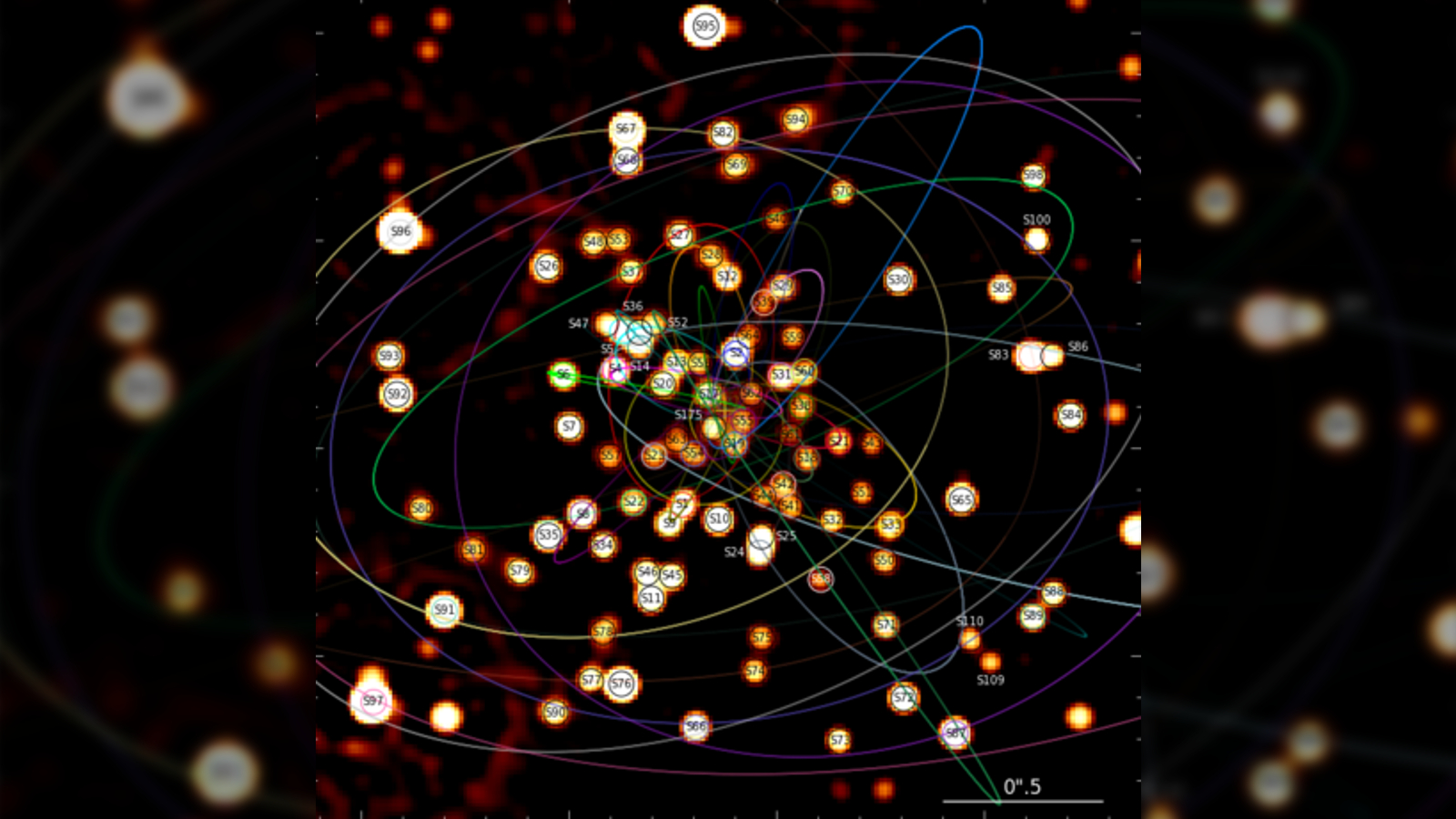Baby stars that defy explanation are 'swarming like bees' around Milky Way's supermassive black hole
A new analysis of inexplicably young stars orbiting extremely close to the Milky Way's black hole heart reveals that they orbit around the gigantic structure in a surprisingly organized way, similar to swarming insects like bees.

Inexplicably young stars are barreling through space at breakneck speeds as they circle precariously close to the supermassive black hole at the center of the Milky Way. This stellar dance may initially appear to be random, but a new study has revealed that these infant stars are moving around in a surprisingly organized manner, similar to swarming insects like bees.
Around 30 years ago, researchers first discovered a group of around 100 stars, known as the S-cluster, orbiting extremely closely to the Milky Way's black hole heart, Sagittarius A* (Sgr A*). These stars, known as S-stars, are all relatively young — less than 100 million years old — and are all located within a few light-years of the giant black hole. The intense gravity from the space-time tear propels the stars to speeds more than 2.2 million mph (3.5 million km/h) — around five times faster than the sun travels through the Milky Way.
Since their discovery, S-stars have been a point of contention among astronomers due to their surprisingly young ages. Past observations and current theories suggest that only the oldest stars in a galaxy should be found this close to a supermassive black hole, but this is clearly not the case.
But in the last decade, scientists have also spotted around a dozen more objects intermingled with the circling S-stars. These entities, known as young stellar objects (YSOs), are just a few million years old and still not fully formed but zip around Sgr A* just as fast as S-stars.
"The S stars were found to be surprisingly young," study lead author Florian Peißker, an astrophysicist at the University of Cologne in Germany, said in a statement. "According to conventional theories, the additional presence of a stellar kindergarten composed of YSOs is completely unexpected."
Related: James Webb telescope reveals 'nursery' of 500,000 stars in the chaotic heart of the Milky Way

In the new study, published June 14 in the journal Astronomy and Astrophysics, researchers analyzed the movements of the YSOs and some S-stars to see how they orbited Sgr A*. This revealed hidden patterns and regularities, similar to swarming bees, which appear as chaotic masses at first glance but are actually highly organized.
Sign up for the Live Science daily newsletter now
Get the world’s most fascinating discoveries delivered straight to your inbox.
The jury is still out on what is causing this organized swarming behavior, but it is a safe bet that Sgr A* is involved somehow, the researchers wrote.
"The distribution of both star variations resembles a disc, which gives the impression that the supermassive black hole forces the stars to assume an organized orbit," Peißker said.
The new study is the latest reminder that there is lots more to learn about the inner reaches of the Milky Way. In recent years, researchers have also found an invisible cosmic ray barrier, a freefalling dead star merger and a bizarre blob of gas traveling at nearly a third of the speed of light, all in close proximity to Sgr A*.

Harry is a U.K.-based senior staff writer at Live Science. He studied marine biology at the University of Exeter before training to become a journalist. He covers a wide range of topics including space exploration, planetary science, space weather, climate change, animal behavior and paleontology. His recent work on the solar maximum won "best space submission" at the 2024 Aerospace Media Awards and was shortlisted in the "top scoop" category at the NCTJ Awards for Excellence in 2023. He also writes Live Science's weekly Earth from space series.










